TOMODACHI-GE 宮城子育て支援プログラム
 GE ファンデーションは、2011年の東日本大震災で被災した東
GE ファンデーションは、2011年の東日本大震災で被災した東
TOMODACHI-GE 宮城子育て支援プログラム
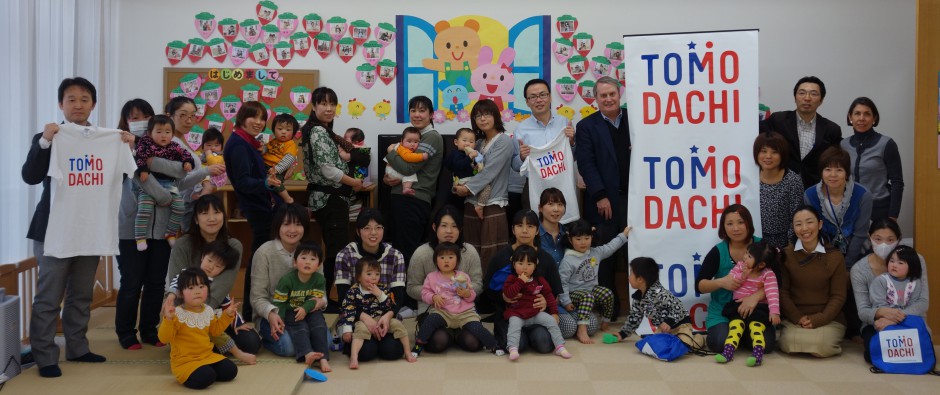
2012年から2013年にかけて、TOMODACHIは東北大学病院の菅原準一医師による宮城周産期支援プログラムを支援してきました。このプログラムの目標は、日米の協力を通して宮城県の津波被災地域における国際的な母子支援システムの構築を達成することです。菅原医師は、乳幼児や妊産婦への長期的なサポートが不足していると深く懸念していて、そうした問題の解決をめざし、このプログラムを立ち上げました。
カウンセリング
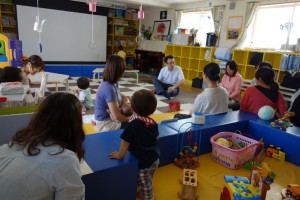
2012年の後半から2013年の期間に、菅原医師は乳幼児を育児中の母親向けのカウンセリングを設定し、直接医療従事者と面談する機会を設けました。このカウンセリングセミナーは、二回(2012年12月、2013年3月)が女川で開かれ、さらに二回(2013年9月、11月)が南三陸で開かれました。参加者は多数ではありませんでしたが(両地域で20人ほど)、母親たちと産科医や助産師の間でより中身の濃い交流がとれました。女川と南三陸は津波による被害が特に大きかった地域で、以前は公的な産科的支援が乏しかったため、参加者たちから非常に高い評価を受けました。
宮城県での統計データの収集
菅原医師の進行中のプロジェクトの一つが宮城県における周産期統計データの解析です。乳幼児と妊産婦のデータは既に津波被災地域の産科施設により収集されていますが、菅原医師のグループはさらに震災後の石巻における300か所以上の避難所のデータもすでに収集しています。菅原医師は現在、これらのデータを詳細に解析し、周産期領域の研究に生かすことを強く切望しています。これらの検討によって、災害時における妊産婦のニーズを特定し、被災地域における長期的なサポート体制を構築することで、必ず起きるであろう自然災害への備えが可能になります。
分娩時救急対応研修の展開:ALSO(Advanced Life Support in Obstetrics), BLSO(Basic Life Support in Obstetrics)
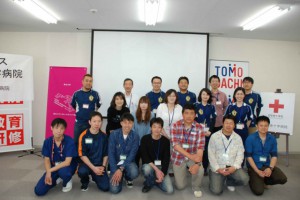
2012年9月、および2013年8月、菅原医師は二日間のALSOとBLSOを石巻と気仙沼で開催しました。これらの研修コースはは幅広い医療プロバイダーを対象とし、周産期に起こりうるいかなる緊急事態、特に大災害後の緊急事態に対応できるようトレーニングすることが目的とされています。合計で76名がこれらのコースへ参加し、人体モデルを使用した分娩介助法、新生児の蘇生方法、母体の産後大量出血への処置方法などをハンズオン形式で体得しました。菅原医師は、特に東北地方では以前より医療資源に乏しく、産科医療従事者に過大な負担がかかっており、特に震災後その傾向が顕著となっているので、こうした研修は非常に重要だと考えています。
多職種連携研修コース
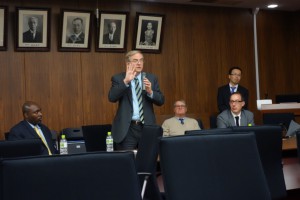
2013年4月、菅原医師は日米間セミナーと津波被災地域視察のため、アメリカより3人の著名な災害対策専門家たちを呼びました。専門家たちは災害対策に関する様々なトピックにわたり講演をいたしました。公衆衛生分野のチャム・E・ダラス教授は「病院や保健施設における災害管理計画」について話し、国立こども病院のダニエル・ファブイ医師は「母子を対象とした災害予防」について、そしてカリフォルニア州立大学ロサンゼルス校からのデイビッド・エイセンマン医師は「災害時の地域社会のレジリエンスとメンタルヘルス」について講演していただきました。セミナーを行った専門家の先生方にとって今回の被災地視察がまたとない貴重な経験となり、地域からのセミナー参加者から示唆に富んだ情報交換ができた結果、相互にとても有益なセミナーとなりました。
米国研修
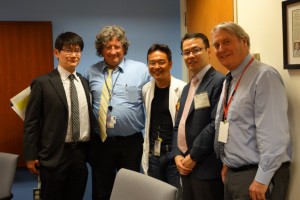
2013年、菅原医師グループは災害予防・対策を学ぶためにワシントンDCを訪れました。研修では、国立災害医療・公衆衛生センターのケネス・スカー教授、災害医療と公衆衛生分野のジェームス・J・ジェームス教授、Uniformed Science University 保健部門からチャールズ・W・ビードリング教授、そのほかの国立こども病院からのドクターたちとのディスカッションの機会がもうけられました。菅原医師はこの研修が多くの教育機関との強固な関係を築き、様々な情報交換ができたので、とても有意義であったと詳しく報告しています。
2014年からの計画
菅原医師は宮城周産期支援プログラムを2014年も継続したいと考えており、5月に災害医療や公衆衛生の様々な分野の専門家たちが集まりワシントンD.C.で開かれる国際シンポジウムをサポートしたいと考えています。
菅原医師はさらなるALSOとBLSO研修、津波被災地域でのカウンセリングなどにも継続的に取り組みたいとも考えています。
菅原医師は最近TOMODACHIへお送りいただいた手紙の中で、「震災からほぼ3年がたちましたが、避難されている方々や妊産婦や子供たちはまだ長期的、慢性的なストレスのもとにあります。私たちは、次世代が明るく暮らす地域社会を実現するためにこれらの家族をサポートする必要があると考えています。」とお話しされています。


